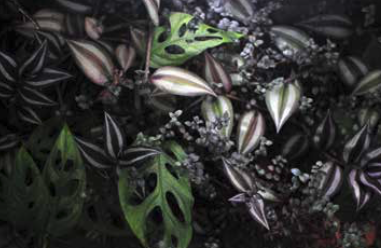Why You Need To Bring Plants Into Your Home
Bringing greenery & plants in your home isn’t just beautiful, it’s also good for you.
I’ve been learning from an interior designer friend all about a new design trend, which isn’t really that new at all. It’s called biophilia, and like all the best things, it’s an old wisdom dressed up in new clothes. Biophilia means the love of all living things, and biophilic design means bringing that love of nature into our home design choices. Here are her words about why incorporating greenery and plants in your home will be good for your physical, mental and emotional well-being. And that’s something that we all need:
10 Good Reasons To Have Plants In Your Home
Plants appear to be everywhere right now. Open almost any design magazine or blog and you’ll find interiors filled with plants.
Increasingly, they are becoming an integral feature in the home, as more and more people rediscover the beauty of greenery and how it can be used to enhance the decoration of any room.
But plants are so much more than just another interior trend. Because as well as looking attractive, there are many more benefits to having them.
So here are ten good reasons to have plants in your home:

1) Filter and clean the air
The quality of air indoors is often more polluted than the air outside, as it becomes trapped and stale. But did you know that plants can help to filter out air pollutants?
According to NASA, they can remove toxins and chemicals from the air. And because most plants release oxygen during photosynthesis, they increase the amount of fresh and clean air in your home too.
2) Improves your skin
Research has found a link between airborne pollutants – like dust – contributing to fine lines and facial wrinkles. But as mentioned, some houseplants help to filter harmful chemicals and dust from the air, thereby improving the radiant appearance of your skin…





 Designers often have to divide their attention between functional and aesthetic requirements. While there are literally hundreds of plants to choose from, the average landscape design palette probably only consists of up to 20 plants that are commonly found in our urban landscape. These plants are there for a reason; they are cost-effective, can be procured with ease, not too difficult to maintain and possess certain rudimentary aesthetic attributes. Think Yellow Creeping Daisy (Sphagneticola trilobata) for ground coverage with the occasional yellow flowers and Heliconia ‘American Dwarf’ for its fuller volume and ornamental potential.
Designers often have to divide their attention between functional and aesthetic requirements. While there are literally hundreds of plants to choose from, the average landscape design palette probably only consists of up to 20 plants that are commonly found in our urban landscape. These plants are there for a reason; they are cost-effective, can be procured with ease, not too difficult to maintain and possess certain rudimentary aesthetic attributes. Think Yellow Creeping Daisy (Sphagneticola trilobata) for ground coverage with the occasional yellow flowers and Heliconia ‘American Dwarf’ for its fuller volume and ornamental potential. Recent studies in Urban Heat Island (UHI) mitigation techniques have shown that greenery can improve both the indoor and outdoor environment. Green roofs can drastically lower direct exposure to solar radiation andreduce surface temperature by close to 50%. However, not all plants carry the same temperature reduction potential. In this light, it is important that the plant selection process includes consideration of temperature reduction potential for improved thermal comfort. Specific functional attributes such as evapotranspiration rate and albedo provide valuable insight into the thermal performance of plants. In addition to beautifying the urban landscape, plants serve as delivery agents of water, moving it from the soil to the atmosphere through its leaves and in the process improving the thermal environment.
Recent studies in Urban Heat Island (UHI) mitigation techniques have shown that greenery can improve both the indoor and outdoor environment. Green roofs can drastically lower direct exposure to solar radiation andreduce surface temperature by close to 50%. However, not all plants carry the same temperature reduction potential. In this light, it is important that the plant selection process includes consideration of temperature reduction potential for improved thermal comfort. Specific functional attributes such as evapotranspiration rate and albedo provide valuable insight into the thermal performance of plants. In addition to beautifying the urban landscape, plants serve as delivery agents of water, moving it from the soil to the atmosphere through its leaves and in the process improving the thermal environment.

